Tales of Nassollotyl
Tales of Nassollotyl is a narrative Warhammer Underworlds campaign set in the two halves of the city of Nassollotyl.
Rules are currently in a Beta state. It’s been worked on constantly. A NEO could certainly use it in your own local area though, feel free to chat with us on Discord, and we can give you the back-end mechanics
Tales of Nassolloyl takes place in the two halves of the name-sake city. The two halves of the city sit astride two mighty beasts, Nasson, and Neolotl. This ever-changing city, although mostly civilized, still rightly belongs in Ghur, with its citizens in constant skirmishes that test their mettle, and forces the strong to rule and the weak to survive.
Tales of Nassolotyl:
General Campign Info
The primary ‘currency’ for the campaign is the cards themselves.
All cards that are available in the community at the start of the campaign have the possibility of belonging to the campaign. This is called the Community Pool. There also exists a GM-banned list. To work out available cards, remove GM-banned cards from the Community Pool. The resulting pool of cards is called the Campaign Pool. The GM may add cards to the Campaign Pool at any time, and this will be considered an expansion.
Player Card Pools are those cards that Players have access to in order to create decks before games.
NPC Card Pools are those cards that NPCs have access to in order to create decks before games.
Players will start with a limited pool of cards in their Player Card Pool. Five power cards, with a maximum of one Gambit Spell, five upgrade cards, and 6 objective cards.
Over time Players will grow their available pool of cards in their Player Card Pool, and so give more flexibility and power to their Warbands.
The different Regions of the city allow for access to different types of cards. Wizard Towers and Libraries have access to spell cards, Industry Regions have access to upgrades. Non-Spell Gambit and Objective Cards are given for playing games and winning games.
All cards can be traded with others on The Great Weave’s Magical Mail System and are binding.
You cannot trade cards within an NPC Card Pool.
The City of Nassollotyl
When Two Creatures Collide…
Nassollotyl exists in two parts; tall gleaming spires grace the back of Nasson, while industry and etherwork communities are carved into and within the rock-hard spires that grow atop Neolotl. These two sections work in tandem, and denizens of the two halves often cross over the various sides when Nasson and Neolotl collide.
The Goal of the Campaign
This particular campaign isn’t really made to facilitate a singular winner. The goal of the campaign is to provide a gaming experience that encourages storytelling and personal goal setting.
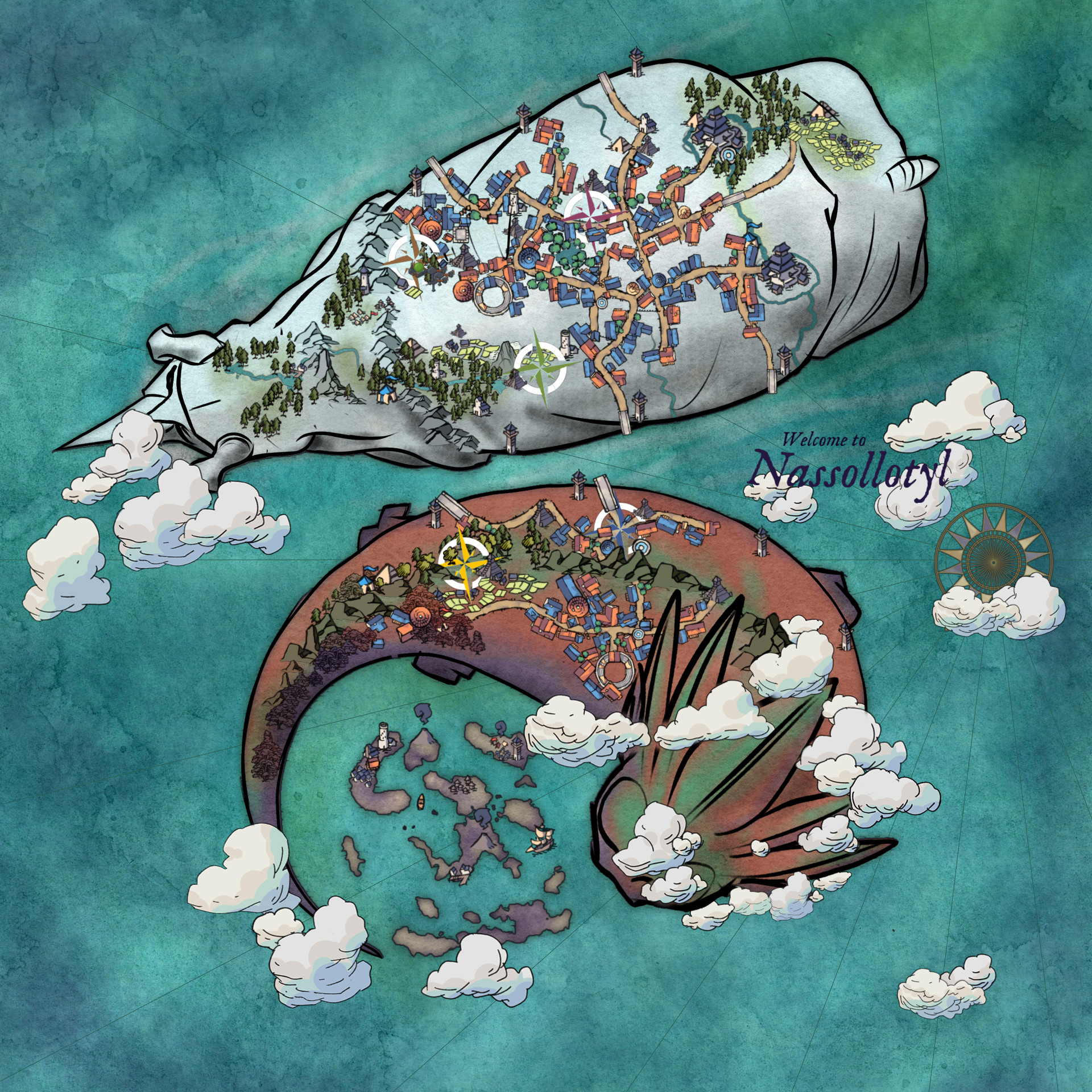
Map Movement
As Nasson and Neolotl collide, the map will change over time, providing a changing environment for Warband to fight over.
Regions on the map are either controlled or uncontrolled. Controlled Regions belong to specific warbands, and Regions within the outer edges of all adjacent Regions is called an Area.
Areas can be split resulting in multiple Areas, an Area and Region, or two Regions.
Warbands start off with a Core-Region. Core-Regions can never be lost, and are always controlled by relevant Warband.
Moving on the Map
Moving from a region you control, to one you do not control, triggers a match.
Warbands can move freely within a controlled Area, as long each the move stays within a controlled area. If a move enters a region or area that is uncontrolled, or controlled by another player, a match is triggered.
Bases and Core Areas
Your Warband will start the Campaign in their Base. This base cannot be attacked, nor can it be co-owned by another Warband.
The first four regions that a Player controls after their Base is considered the Warbands ‘Core’ Area. This Area cannot be attacked, nor can it be co-owned by another Warband
Controlling the Map
When a Warband moves out of their Region into another controlled Region, the moving Warband is considered the Attacker, while the Warband that owns the Region being moved into is considered the Defender. The match that is triggered during this move is played between the Attacker and the Defender. The winner of this match owns the Region being played in.
When a Warband moves out of their Region into an uncontrolled Region, the moving Warband is considered the Attacker. The match that is triggered in this move is played between the Attacker and any Player playing any Warband as a stand-in adversary. If the winner of this match is the Attacker, the Region then belongs to the attacking Warband. If the Defender wins, the Region remains uncontrolled.
When a Warband moves out of their Region into another controlled Region that is controlled by an NPC Warband, the moving Warband is considered the Attacker, while the NPC Warband that owns the Region being moved into is considered the Defender. The match that is triggered during this move is played between the Attacker and the Defender. The Defender is played by the Gamemaster. If the winner of this match is the Attacker, the Region then belongs to both the attacking Warband and the NPC Warband. This Region is thus co-owned. If the Defender wins, the Region remains under the control of the NPC Warband.
Base Example
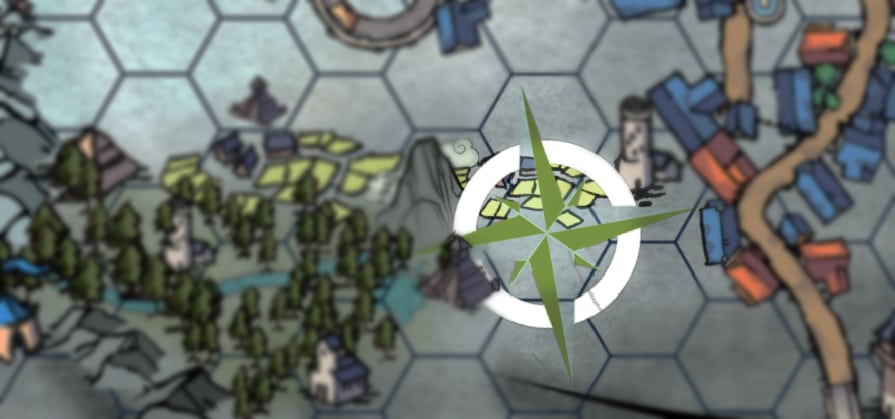
Matches
Deck Building
Only Cards found in the Campaign Pool can be used in deck-building.
Once players have the ability to create decks as described in page 15 the Beastgrave Rulebook, all subsequent matches against other players that also have this ability must abide by the standard deck-building rules.
When players are not able to create standard decks, work out which player has the smallest number of available, playable cards in their Power Deck and Objective Deck separately. The match is played with Power and Objective Decks with the number of cards in each deck equalling that of the player with the smallest amount of available, playable cards. Resulting in equally sized decks unless both are able to field standard decks.
NPC Warbands always play with standard-sized decks.
Games
Games that are played with non-standard decks are played with Two Rounds only. In these games, whenever the term “Third Round” is mentioned, assume that it says “Second Round” instead.
All other games are played as standard Warhammer Underworlds games, with the following exceptions:
- The Defender (see above) is assumed to have won the roll-off during the “Place the Boards” phase during the game set up.
- The Gamemaster may submit further restrictions or alterations of rules depending on situations
Rewards
Match Rewards
There are a number of different Region types on the map;
- Standard
- Industry
- Wizard Towers or Libraries
- Treasure Spots
- Player and NPC Bases
Each Region of the map has a set of cards that belong to the Region. The first person who owns a Region gains access to the relevant Cards held in the Region. The following describes the standard rewards for each type of Region:
- Standard – Two Non-Spell Gambits, and Two Objective Cards
- Industry – Four Upgrade Cards
- Wizard Towers or Libraries – Up to Four Spell Cambit Cards
- Treasure Spots – These are a surprise and given out by the GM. See below.
- Player and/or ‘Core’ areas – Not Applicable, as you cannot control another Warbands Base or Core Area.
- NPC Bases – See below
Industry Region Example
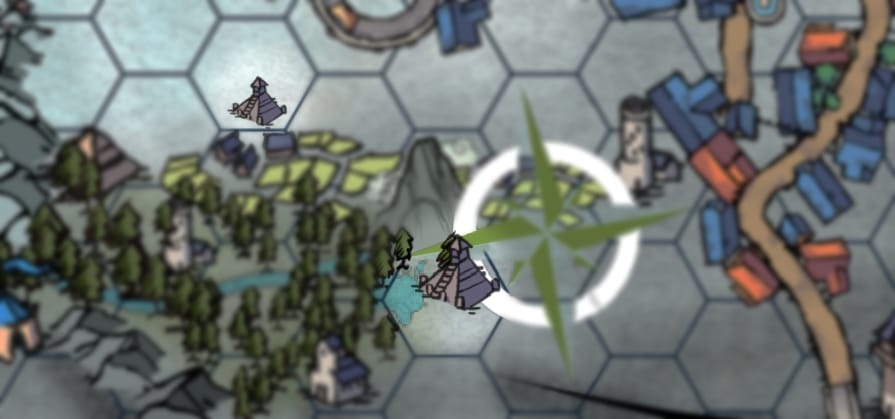
Treasure Spots
Some Regions are considered to be Treasure Spots. Once a Treasure Spot is attacked successfully and owned by a Warband, the cards earned are kept permanently, and if the Region is lost the cards stay with the Warband.
Treasure Spot Example
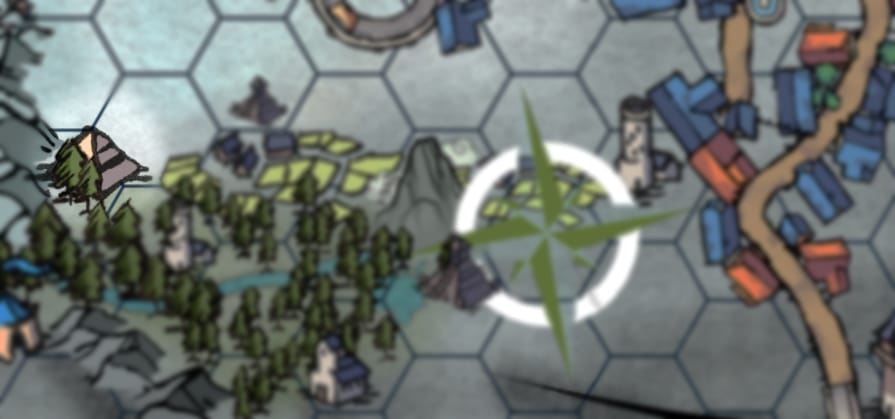
Co-owning with NPCs
While a player co-owns a Region with an NPC, that player has access to that NPCs NPC Card Pool. Players with access to an NPC Card Pool can include the Universal cards found within the pool in their own decks.
When a player co-owns a Region with an NPC Warband, and the co-owned Region is attacked, the Defender can use the NPC or the player’s Warband as the Defending Warband.
When a player co-owns a Region with an NPC, they may use the NPC Warband or the player’s Warband, when attacking any Regions adjacent to the co-owned Region.
NPC Base Example
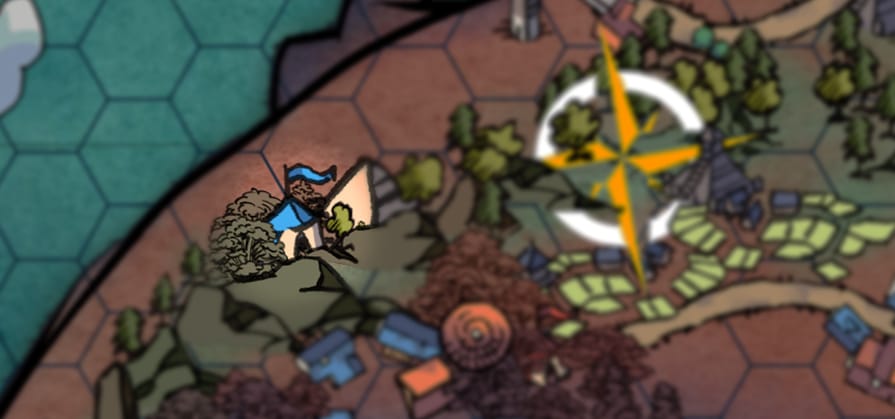
Losing
When a player acts as a Stand-in player, usually when they play as Defender for an Uncontrolled, even if they lose, they gain a single card.
When a player plays as Defender for a Region that they own, and they lose the following repercussions occur, depending on the Type or Region:
- Standard – The player must give the winning Attacker player Two Non-Spell Gambits, and Two Objective Cards
- Industry -The player must give the winning Attacker player Four Upgrade Cards
- Wizard Towers or Libraries -The player must give the winning Attacker player Two Spell Cambit Cards
- Treasure Spots – Once a Treasure Spot has been Controlled, further Attackers treat the Region as a Standard Region.
- Player and/or ‘Core’ areas – Not Applicable, as you cannot control another Warbands Base or Core Area.
- NPC Bases – See Above
Wizard Tower Example
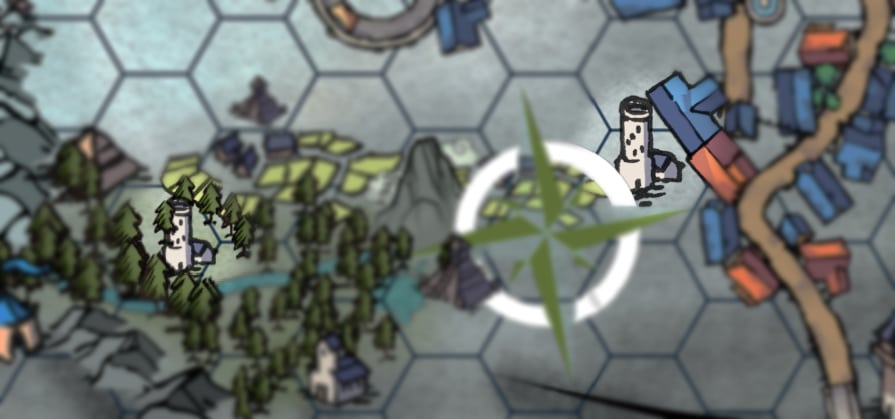
The Map
The Moving Map
Nasson does move around Neolotl. As such, the map will change every so often. You can find the current layout live in the studio. And also a picture of the layout can be found here:

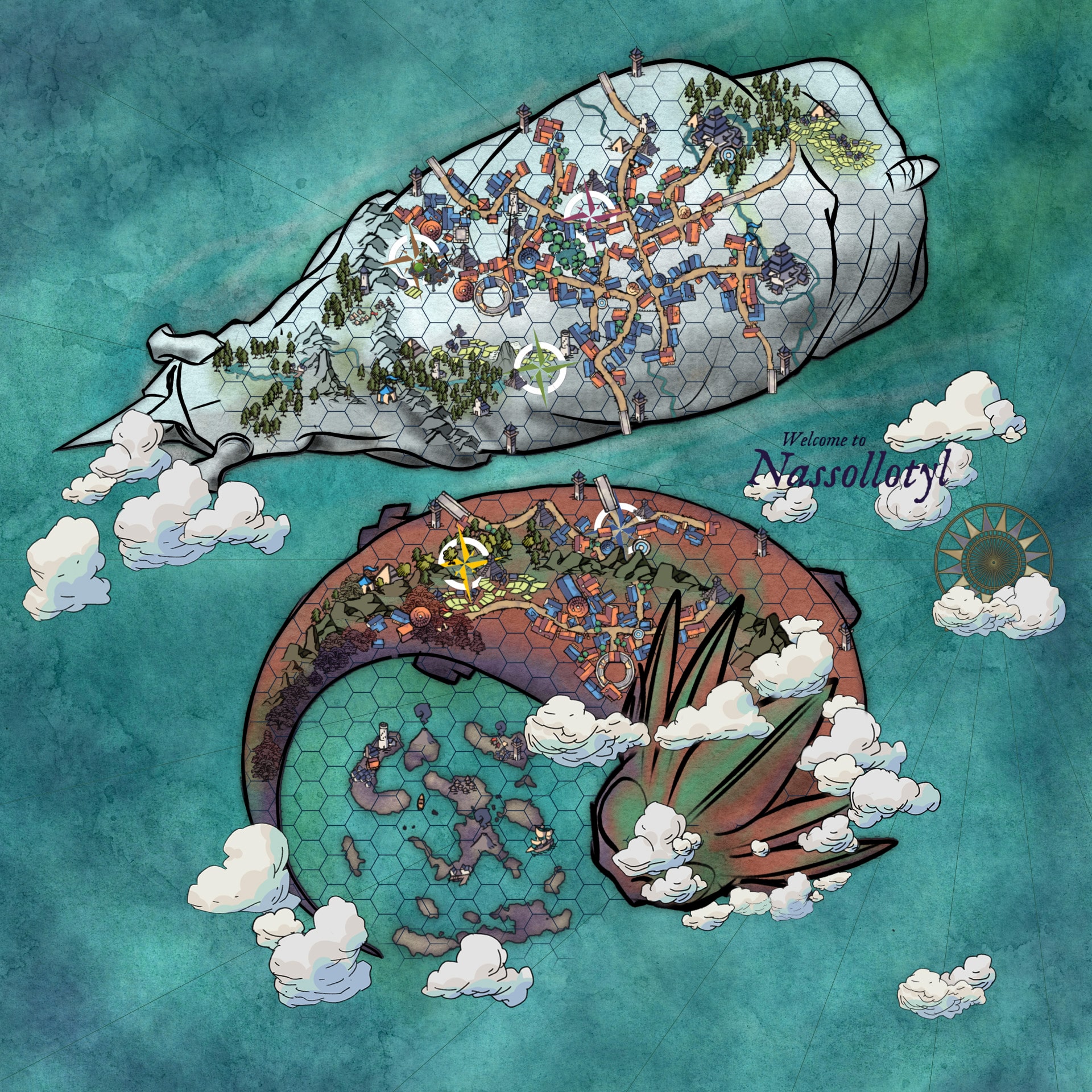
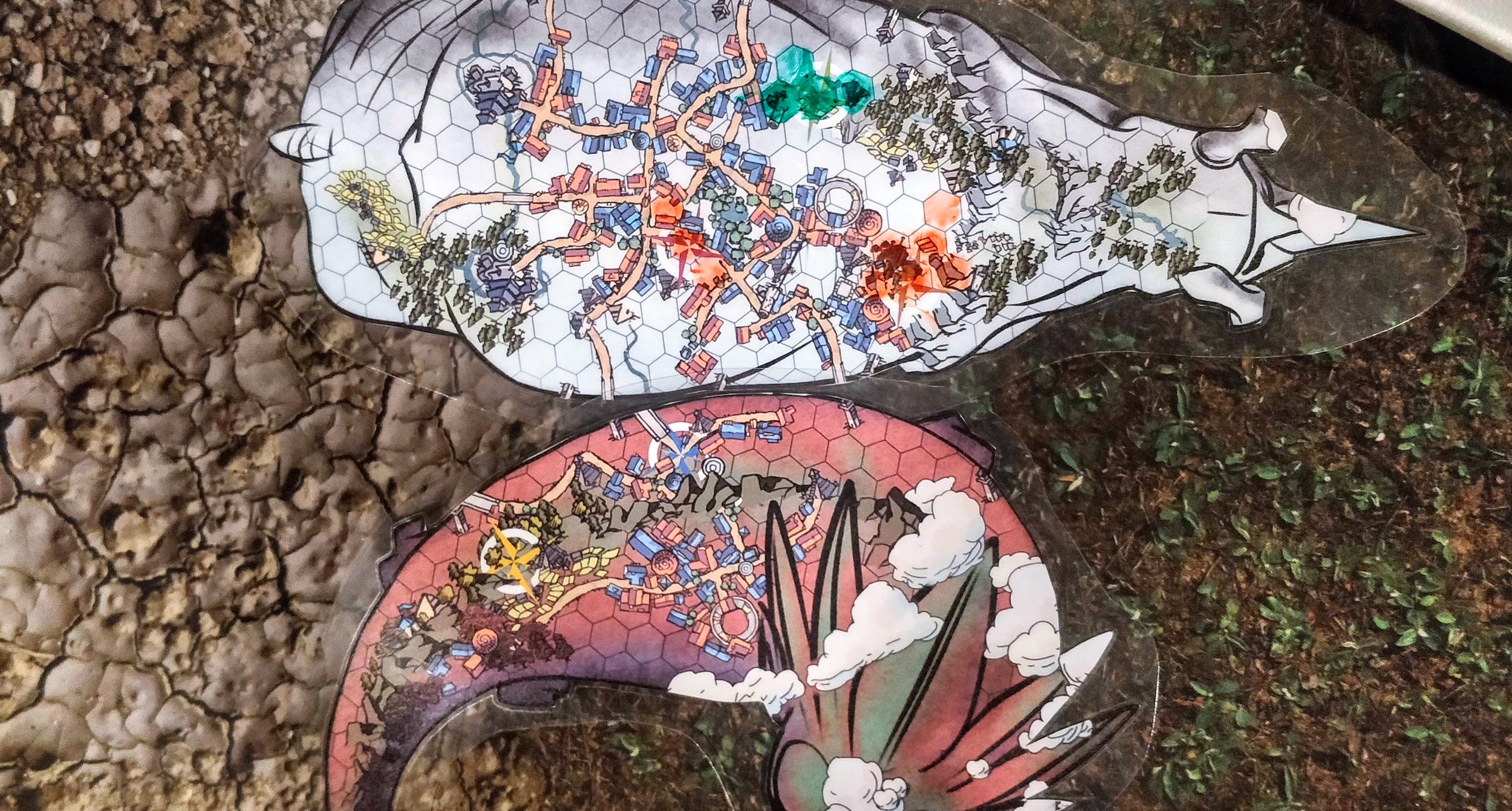
Find a mistake?
If you find any mistakes, or you find it plays better in some way, please feel free to get in touch with us and we’ll make it happen!
You can also get in touch on our discord!



